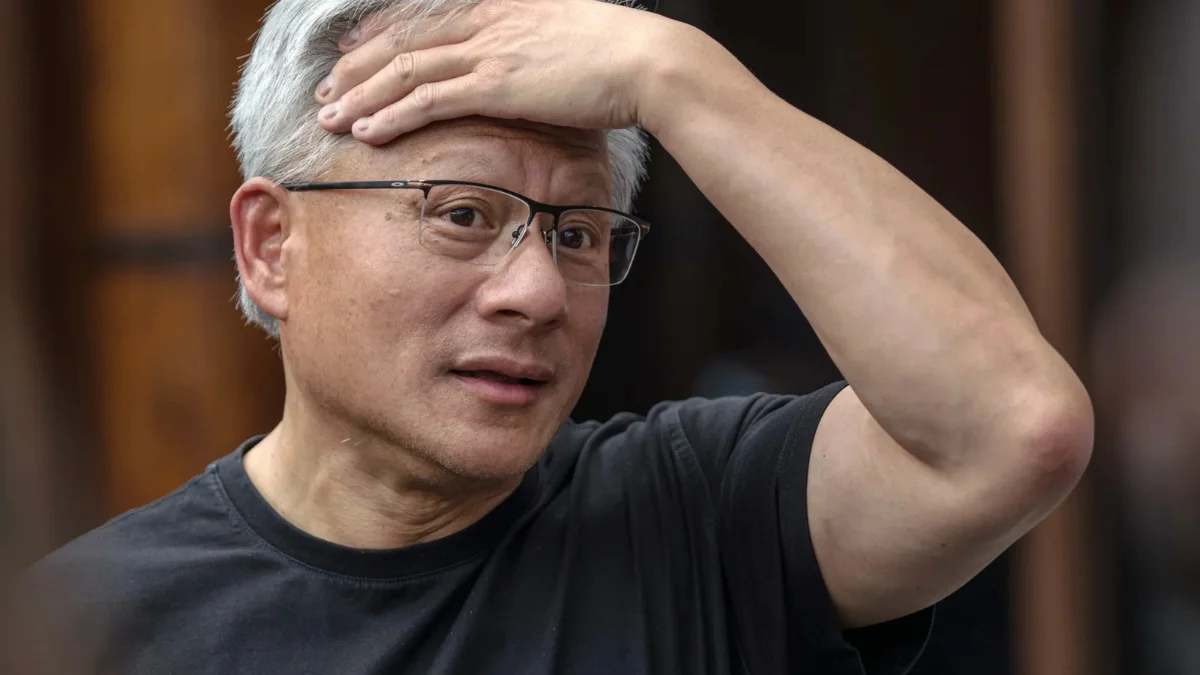Necessary Always Active
Necessary cookies are required to enable the basic features of this site, such as providing secure log-in or adjusting your consent preferences. These cookies do not store any personally identifiable data.
|
||||||
|
||||||
|
||||||
|

Tech industry leaders continue to debate whether artificial intelligence growth has reached its peak. However, Nvidia CEO Jensen Huang says the AI boom is far from over, dismissing concerns about a potential slowdown in the sector. On Wednesday, August 27th, 2025, Huang said that he isn’t worried about AI chip spending slowing, predicting the market could grow into a multi-trillion-dollar industry in the coming five years, Reuters reported.
The comments come at a crucial time when investors are questioning the sustainability of AI-driven market gains. Many wonder if companies have overspent on AI infrastructure and whether the technology can deliver promised returns on massive investments.
Jensen Huang’s AI prediction suggests that artificial intelligence will continue expanding into new sectors for years to come. The Nvidia leader believes current applications represent only a small fraction of AI’s ultimate potential.
During recent investor meetings, Huang outlined his vision for integrating AI across the healthcare, automotive, manufacturing, and entertainment industries. The Nvidia CEO asked investors not to worry about signs of slowing growth at the company, which has been a key player in the AI boom. Earlier in the day, Nvidia projected third-quarter revenue in line with analyst estimates but below the high expectations that pushed its stock up about one-third this year.
Huang said, “A new industrial revolution has started. The AI race is on. We see $3 trillion to $4 trillion in AI infrastructure spend by the end of the decade.” He also emphasizes that AI models are becoming more sophisticated and capable. This progression requires increasingly powerful hardware, creating sustained demand for Nvidia’s specialized chips.
Nvidia’s AI boom has transformed the company from a gaming-focused chip maker into one of the world’s most valuable corporations. Revenue from data center operations has grown exponentially as companies rush to build AI capabilities.
Major tech companies like Microsoft, Google, and Amazon have become some of Nvidia’s largest customers. These firms are spending billions on AI infrastructure to power everything from chatbots to advanced research applications.
Matt Orton, head of advisory solutions at Raymond James Investment Management, said, “The mega caps are the ones propelling a lot of the capex that Nvidia is benefiting from. But obviously Nvidia still is growing, is able to sell. If anything, this just highlights that there’s a lot of durability to this (AI) trade… The businesses of these hyperscalers can continue to accelerate, and you’re not seeing any sort of sign of a slowdown being reflected in the results of Nvidia.“
Nvidia’s latest revenue forecast continues to exceed analyst expectations quarter after quarter. Company executives project sustained growth as AI adoption accelerates across different industries and geographic regions.
Huang believes that enterprise adoption of AI is still in early stages. Many businesses are just beginning to understand how AI can improve their operations and customer experiences.
Nvidia’s shares have far outperformed the broader markets by 10% gain, but AI-related shares are starting to show signs of cooling. In July, Nvidia’s shares were expected to rise after the chip maker after its valuation surpassed Apple and Microsoft, reaching $4 trillion market cap. Concerns grew this month after OpenAI CEO Sam Altman warned that investors might be “overexcited” about AI.
The CEO also notes that government investments in AI research and development will create additional demand. Countries worldwide are prioritizing AI capabilities for national competitiveness and security reasons.
International expansion presents another growth opportunity. Developing markets are beginning to invest in AI infrastructure, potentially creating new customer bases for Nvidia’s products.
The rivalry between Nvidia and AMD AI solutions is heating up as both companies vie for dominance in the artificial intelligence chip market. AMD has been working to develop competitive alternatives to Nvidia’s popular AI processors. At the beginning of August, the reports suggested that the U.S. agreed to a 15% share in Nvidia’s and AMD’s chip sales in China.
AMD’s recent product launches show promising performance improvements. The competition could benefit customers through better pricing and more innovative solutions.
Despite competitive pressure, Huang remains confident in Nvidia’s market position. He believes the company’s early AI investments and comprehensive product portfolio will sustain its leadership.